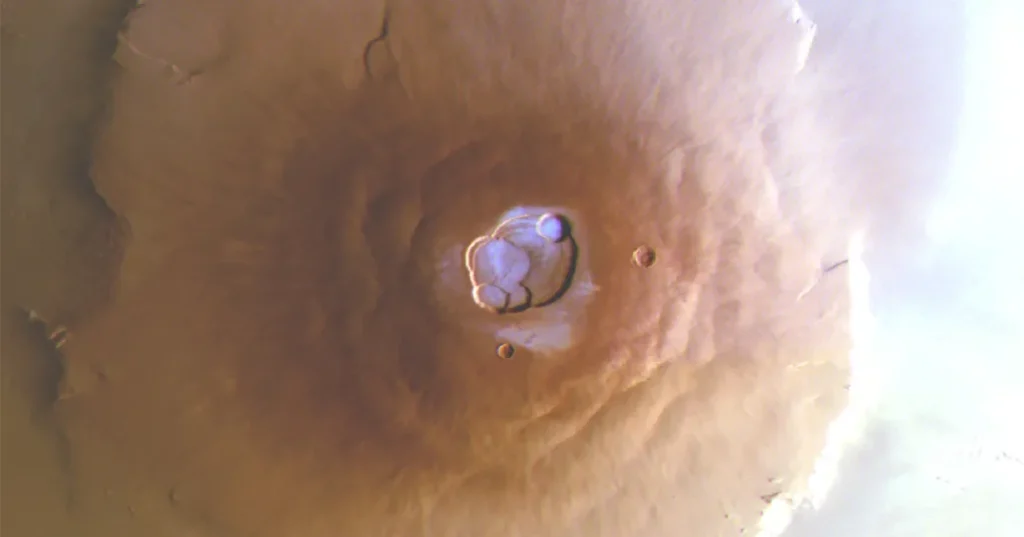FALCON POWERS – It has been known for years that there are large amounts of water ice trapped in the polar regions of Mars, and that the regions around the equator are barren, dry, and devoid of any surface ice.
However, recent observations of Mars have discovered the presence of ice on the giant volcanoes, but it only appears briefly after sunrise and quickly sublimates. Estimates suggest that 150,000 tons of water cycle between the surface and the atmosphere on a daily basis. The polar ice caps of Mars have been the subject of many studies since the discovery of water ice in 2008.
During the winter season and in the dark, the surface cools, allowing the gas in the atmosphere to condense into large chunks of dry ice (carbon dioxide ice). Then, as the poles are exposed to sunlight, the frozen carbon dioxide sublimates back into gas.

Aside from carbon dioxide, the poles are largely composed of frozen water ice. The carbon dioxide deposits are relatively thin compared to the water ice, being only about a meter thick over the north pole. The south pole has a permanent carbon dioxide cap around 8 meters thick.
A team of planetary scientists led by Alyssa Waldron, a postdoctoral fellow at Brown University, has discovered water ice at the summit of the Tharsis volcanoes on Mars. These volcanoes are among the tallest on the planet, with Olympus Mons being the tallest volcano in the solar system.
The ice was detected using high-resolution color and stereo surface imaging (CaSSIS) from the Trace Gas Orbiter spacecraft of the European Space Agency. This discovery was further confirmed by independent observations from the high-resolution stereo camera on the Mars Express Orbiter. This is the first time water ice has been detected in the equatorial regions of Mars, which challenges our understanding of the planet’s climate dynamics. Until now, it was thought unlikely that ice would form around the equator due to the high levels of solar radiation and the thin atmosphere.
The study suggests that the ice is only present for a few hours after sunrise before the high temperatures cause it to sublimate in the solar radiation, according to Science Alert.


